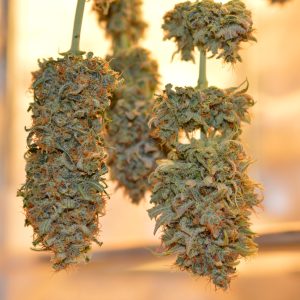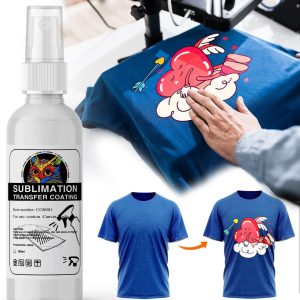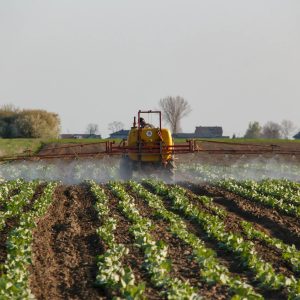
Dealing with persistent squirrels damaging your garden, bird feeders, or property can be incredibly frustrating. These agile creatures may appear harmless, but they can cause significant damage by digging up flower beds, stealing bird feed, chewing through electrical wires, and creating nests in unwanted areas. Squirrel repellent spray has emerged as one of the most popular and effective solutions for homeowners seeking a humane way to deter these persistent rodents without causing them harm.
The effectiveness of squirrel repellent spray lies in its ability to create an invisible barrier that squirrels find unpleasant, encouraging them to seek alternative locations for their activities. Unlike physical barriers or traps, spray repellents can be applied to various surfaces and areas, making them versatile solutions for comprehensive squirrel control. Modern formulations combine natural ingredients with scientific understanding of squirrel behavior to create products that are both effective and environmentally responsible.
Understanding How Squirrel Repellent Spray Works
Squirrel repellent spray operates primarily through scent-based deterrence, taking advantage of squirrels’ highly developed sense of smell. These intelligent rodents rely heavily on their olfactory senses to navigate their environment, identify food sources, and detect potential threats. When you apply a quality squirrel deterrent spray, you’re essentially creating an aromatic boundary that signals danger or unpleasantness to approaching squirrels.
The most effective squirrel repellent spray products contain ingredients that trigger natural avoidance responses in squirrels. Peppermint oil is a popular scent for many people because it has a refreshing smell. It’s also a great way to deter squirrels! This dual benefit makes peppermint-based sprays particularly appealing to homeowners who want effective squirrel control without offensive odors.
The science behind natural squirrel repellent spray involves understanding which scents squirrels instinctively avoid. Research has shown that squirrels have evolved to avoid certain aromatic compounds that may indicate the presence of predators or toxic plants. Commercial and homemade squirrel repellent spray formulations capitalize on these natural aversion responses to create effective deterrent solutions.
Key Ingredients in Effective Squirrel Repellent Spray
| Ingredient | Effectiveness Level | Duration | Safety Rating |
|---|---|---|---|
| Peppermint Oil | High | 7-14 days | Excellent |
| Cinnamon Oil | High | 5-10 days | Excellent |
| Capsaicin (Hot Pepper) | Very High | 10-21 days | Good |
| Garlic Extract | Medium | 3-7 days | Excellent |
| White Vinegar | Medium | 5-10 days | Excellent |
The most successful squirrel repellent spray products often combine multiple active ingredients to create a more comprehensive deterrent effect. A generous amount of ground cinnamon or cinnamon oil mixed with cayenne extract or peppermint oil and warm water must be applied to affected areas to ward squirrels away. This multi-ingredient approach increases the likelihood of success because it addresses different aspects of squirrel sensory perception.
Top Commercial Squirrel Repellent Spray Products
The market for squirrel repellent spray has expanded significantly in recent years, with numerous manufacturers offering specialized formulations designed for different applications and environments. We’ve tested dozens and narrowed it down to the top 5 performers for 2025. The 8-pack Garden & Attic repellent pouches lead our list, followed by the robust 12-pack Outdoor formula that’s perfect for larger spaces. For spray lovers, Squirrel Stopper’s 32 oz concentrate packs a punch, demonstrating the variety of options available to consumers.
Professional-grade squirrel deterrent spray products typically offer several advantages over homemade solutions, including consistent ingredient concentrations, extended shelf life, and specialized application mechanisms. These products have undergone testing to ensure optimal effectiveness while maintaining safety standards for humans, pets, and the environment.
Natural vs. Chemical-Based Squirrel Repellent Spray
Natural squirrel repellent spray formulations have gained considerable popularity among environmentally conscious consumers. Botanical oils and other natural ingredients keep squirrels away. All natural, people, pet and environmentally friendly. These products typically rely on essential oils and plant-based compounds that squirrels find unpleasant while remaining safe for other animals and plants.
The primary ingredients in natural squirrel repellent spray include:
- Peppermint Essential Oil: Creates a strong aromatic barrier that squirrels find overwhelming
- Cinnamon Oil: Provides long-lasting scent deterrence with pleasant human appeal
- Capsaicin Extract: Derived from hot peppers, creates an irritating sensation without harm
- Garlic Oil: Produces a pungent odor that squirrels instinctively avoid
- Rosemary Extract: Offers natural preservation properties while deterring rodents
Water-Based Peppermint and Cinnamon Oil Mix increases Repellent Power. Stings squirrels and chipmunks when they try to chew on sprayed areas and objects. Will not harm flowers or plants, highlighting the dual benefits of natural formulations that protect both your property and garden plants.
DIY Squirrel Repellent Spray Recipes
Creating your own homemade squirrel repellent spray can be cost-effective and allows you to customize ingredients based on your specific needs and preferences. Many homeowners prefer DIY solutions because they can control exactly what goes into their squirrel repellent spray and adjust concentrations based on the severity of their squirrel problem.
Basic Peppermint Oil Squirrel Repellent Spray
The most popular DIY squirrel repellent spray recipe combines peppermint essential oil with water and a small amount of dish soap to help the oil mix properly. You can also make a peppermint essential oil spray with the ratio of one drop of peppermint essential oil to one ounce of vinegar and use it to spray on hard surfaces in the garden. This simple formula provides an effective starting point for homeowners new to making their own squirrel deterrent spray.
Ingredients for Basic Peppermint Squirrel Repellent Spray:
- 2 cups warm water
- 1 tablespoon peppermint essential oil
- 1 teaspoon liquid dish soap
- 1 tablespoon white vinegar (optional)
Preparation Steps:
- Combine warm water and dish soap in a spray bottle
- Add peppermint essential oil and shake vigorously
- Include white vinegar for enhanced effectiveness
- Test on a small area before widespread application
- Reapply after rain or every 7-10 days
Multi-Ingredient Natural Squirrel Repellent Spray
For more challenging squirrel problems, a comprehensive natural squirrel repellent spray combining multiple deterrent ingredients often proves more effective. You can also use diluted cinnamon oil, combine it with a few drops of peppermint oil, spray and soak a rag, and tie it to a tree or post near your garden, demonstrating how different application methods can enhance effectiveness.
Advanced Natural Squirrel Repellent Spray Recipe:
- 2 cups water
- 1 tablespoon peppermint oil
- 1 tablespoon cinnamon oil
- 2 tablespoons cayenne pepper
- 1 tablespoon garlic powder
- 1 teaspoon liquid soap
- 2 tablespoons white vinegar
This comprehensive squirrel repellent spray addresses multiple sensory triggers that squirrels find unpleasant, increasing the likelihood of successful deterrence while maintaining safety for other animals and plants.
Application Strategies for Maximum Effectiveness
Proper application technique significantly impacts the success of any squirrel repellent spray program. Understanding when, where, and how to apply these products ensures optimal results while minimizing waste and environmental impact. The key to successful squirrel deterrent spray application lies in consistent coverage of target areas and regular reapplication schedules.
Timing and Weather Considerations
The effectiveness of squirrel repellent spray depends heavily on environmental conditions and application timing. Applying cayenne pepper, peppermint oil, and other squirrel repellent sprays requires persistence to outpace the squirrel activity. After a rainy day, it’s best to reapply sprays immediately for maximum effectiveness. This highlights the importance of weather awareness in maintaining effective squirrel deterrence.
Optimal Application Conditions:
- Temperature: Apply during moderate temperatures (60-80°F) for best adhesion
- Humidity: Low to moderate humidity levels improve spray effectiveness
- Wind: Minimal wind conditions prevent spray drift and ensure accurate application
- Precipitation: Avoid application before predicted rain; reapply after storms
- Time of Day: Early morning or late afternoon applications often prove most effective
Strategic Placement Areas
Successful squirrel repellent spray programs require strategic identification of key application areas where squirrels are most likely to approach or cause damage. Understanding squirrel behavior patterns helps homeowners focus their deterrent efforts on high-traffic areas and entry points.
Primary Application Zones:
- Garden Perimeters: Create protective barriers around vegetable gardens and flower beds
- Bird Feeder Areas: Spray surrounding surfaces to protect feeding stations
- Tree Trunks: Apply to bark surfaces to prevent climbing access
- Fence Lines: Treat wooden fences and railings where squirrels travel
- Building Entry Points: Focus on potential nesting or entry locations
- Garbage Areas: Protect waste containers and compost bins
Safety Considerations and Best Practices
While natural squirrel repellent spray products are generally safe for humans and pets, proper handling and application procedures ensure optimal safety for all family members. Understanding potential risks and implementing appropriate precautions prevents accidental exposure while maintaining effective squirrel deterrence.
Human and Pet Safety Guidelines
Essential Safety Measures for Squirrel Repellent Spray Use:
- Always read and follow manufacturer instructions completely
- Wear protective clothing, including gloves and eye protection during application
- Avoid spraying on windy days to prevent inhalation or eye contact
- Keep children and pets away from treated areas until spray has dried
- Store all squirrel deterrent spray products in secure, childproof locations
- Never spray directly on food plants intended for human consumption
- Test products on small, inconspicuous areas before widespread application
Environmental Impact Considerations
Responsible squirrel repellent spray use includes consideration of broader environmental impacts and effects on non-target wildlife species. 100% natural, humane and long lasting. No chemicals, poisons or killers. Our active ingredients are Peppermint, Cinnamon, Chilli and Garlic essential oil. No harmful nasties and only completely natural ingredients. Safe for children and animals. This emphasis on natural ingredients helps minimize negative environmental consequences.
Environmentally Responsible Practices:
- Choose biodegradable, natural ingredient formulations when possible
- Avoid over-application that could affect beneficial insects or pollinators
- Consider impact on other wildlife species that may encounter treated areas
- Properly dispose of empty containers according to local regulations
- Monitor effectiveness to avoid unnecessary repeated applications
Measuring Success and Troubleshooting Common Issues
Evaluating the effectiveness of your squirrel repellent spray program requires systematic observation and documentation of squirrel activity levels before and after treatment. Understanding what constitutes success and recognizing when adjustments are needed ensures long-term squirrel management success.
Signs of Effective Squirrel Deterrence
Positive Indicators:
- Reduced visible squirrel activity in treated areas
- Decreased damage to plants, bird feeders, or property
- Absence of fresh digging or disturbed soil
- Reduced squirrel droppings in target areas
- Less frequent squirrel sightings during peak activity periods
Monitoring Timeline:
- Week 1-2: Initial reduction in squirrel presence
- Week 3-4: Establishment of new squirrel traffic patterns
- Month 2-3: Long-term behavior modification evidence
- Seasonal Changes: Adaptation to changing squirrel activity levels
Common Challenges and Solutions
Even the best squirrel repellent spray programs may encounter obstacles that require strategic adjustments. Understanding common issues and their solutions helps maintain effective long-term squirrel deterrence.
Frequent Application Challenges:
Weather-Related Effectiveness Loss
- Problem: Rain washes away spray effectiveness
- Solution: Establish post-rain reapplication schedules
- Prevention: Use weather-resistant formulations when available
Squirrel Adaptation Issues
- Problem: Squirrels become accustomed to specific scents
- Solution: Rotate different squirrel deterrent spray formulations
- Strategy: Combine spray applications with other deterrent methods
Coverage Area Limitations
- Problem: Large areas require frequent, expensive applications
- Solution: Focus on high-priority zones and entry points
- Alternative: Combine targeted spraying with physical barriers
Cost-Effective Squirrel Management Strategies
Implementing a successful squirrel repellent spray program doesn’t require significant financial investment, especially when combining commercial products with strategic homemade solutions. Understanding cost-effective approaches helps homeowners maintain long-term squirrel deterrence without breaking their budgets.
Budget-Friendly Application Methods
Cost Comparison Analysis:
| Method | Initial Cost | Monthly Cost | Coverage Area | Effectiveness Rating |
|---|---|---|---|---|
| Commercial Spray | $15-30 | $8-15 | 500-1000 sq ft | 8/10 |
| DIY Natural Spray | $10-20 | $3-8 | 1000+ sq ft | 7/10 |
| Concentrate Products | $20-40 | $5-12 | 2000+ sq ft | 9/10 |
| Essential Oil Blend | $25-35 | $6-10 | 800-1200 sq ft | 8/10 |
Maximizing Product Longevity
Strategic application techniques can significantly extend the effectiveness period of any squirrel repellent spray, reducing overall costs while maintaining consistent deterrence. The squirrel-repelling balls deliver long lasting scent, causes mild irritation to squirrels when they close to the repellent, last about 60-90 days, demonstrating how different product formats can offer extended protection periods.
Longevity Enhancement Strategies:
- Apply squirrel deterrent spray to absorbent materials like cloth strips for extended release
- Focus applications on protected areas less exposed to weather
- Combine spray applications with scent-soaked cotton balls in strategic locations
- Use concentrated formulations that can be diluted as needed
- Establish regular maintenance schedules rather than reactive applications
Ready to protect your property from persistent squirrel damage? Invest in a high-quality squirrel repellent spray today and experience the peace of mind that comes with effective, humane wildlife deterrence. Whether you choose a commercial product or create your own natural formulation, consistent application of proven squirrel repellent spray solutions will help you reclaim your garden, protect your bird feeders, and maintain a squirrel-free environment around your home.
Source: Best Squirrel Repellent Solutions
For more information about effective squirrel repellent spray products and application techniques, consult with local wildlife management professionals or visit your nearest garden center for personalized recommendations.





